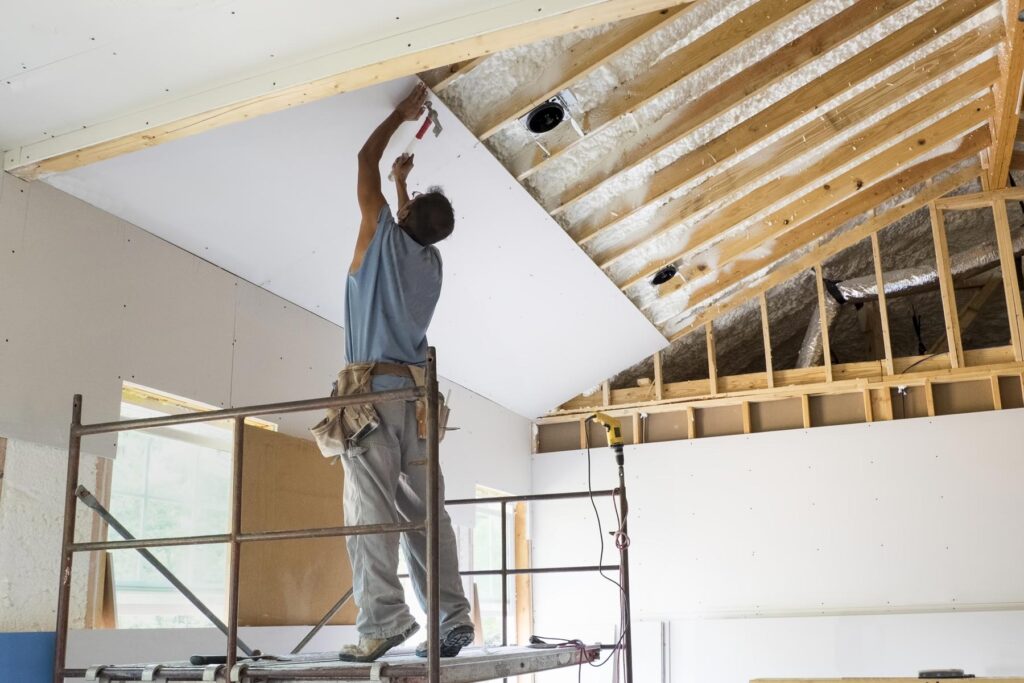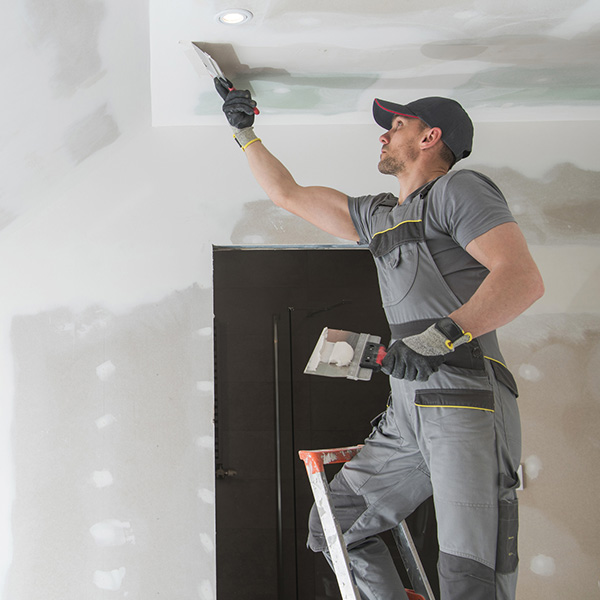Reliable Drywall Repair Techniques to Restore Your Wall surfaces
Reliable Drywall Repair Techniques to Restore Your Wall surfaces
Blog Article
Drywall Setup Facilitated: Tips for Perfect Results
Drywall installation is usually perceived as an overwhelming job, yet with the appropriate approach and expertise, it can become a convenient undertaking. Choosing high quality products and preparing the installation location are important primary steps that set the structure for success. Mastering techniques for cutting, hanging, and completing drywall can dramatically influence the end result. As we discover these necessary pointers, you might locate that also the tiniest modifications in your approach can lead to incredibly enhanced outcomes, leaving you to think about how these practices can change your next project.
Choosing the Right Products
Picking the ideal products for drywall installation is crucial to accomplishing a resilient and cosmetically pleasing coating. drywall repair. The main element, drywall sheets, normally been available in various thicknesses, with 1/2-inch sheets being common for interior wall surfaces. For areas needing added dampness resistance, such as washrooms or kitchen areas, consider making use of eco-friendly board or cement board, which are specially designed to withstand moisture

In addition, picking the ideal fasteners-- either nails or screws-- is essential for securing the drywall to the framing. Drywall screws are typically favored for their holding power and lowered danger of popping. Last but not least, consider the complements such as primer and paint, which not only boost the look however additionally secure the drywall from moisture and wear.
Preparing the Installation Location
Prior to starting the drywall installment process, it is important to prepare the installment location thoroughly. A clean workspace minimizes the threat of damage to existing items and allows for efficient motion during installation.
Next, examine the walls and ceiling for any kind of imperfections, such as fractures, openings, or mold. Address these issues in advance; patch any damages and enable enough time for fixings to dry. Additionally, make sure that electric outlets, switches, and pipes are properly positioned and represented, as this will certainly influence drywall placement.
Consider the environmental problems. A secure temperature level and moisture degree are important for optimum attachment and efficiency of the drywall products. If required, use a dehumidifier or heater to produce ideal conditions.
Cutting and Hanging Drywall
The secret to reliable drywall installation exists in the exact cutting and hanging of the panels. Use a straight side and an energy blade to score the drywall along your dimensions, then break it along the racked up line for a tidy break.

Always function from the top down and left to right, making sure that you preserve a staggered pattern to enhance security. Correctly hanging the drywall establishes the continue reading this structure for a smooth surface, inevitably causing remarkable cause your drywall task.
Taping and Mudding Methods
While correct cutting and dangling of drywall sets the stage, the next critical action entails mastering taping and mudding techniques to guarantee a smooth surface. Taping is crucial for reinforcing joints and protecting against splits; it involves installing tape right into the applied joint substance (mud) Beginning with a quality fiberglass or paper tape, using the tape over the joint and pushing it right into the wet mud utilizing a taping blade, ensuring no air bubbles remain.
When the tape remains in area, apply a thin layer of joint compound over the tape, feathering the sides to create a smooth transition to the drywall surface area. Allow this layer to completely dry entirely prior to sanding it lightly to eliminate blemishes. Repeat this procedure, applying additional layers of mud as required-- usually 2 to 3 coats-- while slowly widening the application location with each layer to attain a seamless appearance.
After the final coat dries out, sand the surface area with a fine-grit sandpaper till smooth. drywall website here repair. Bear in mind to use a mask during fining sand to prevent breathing in dirt bits. Grasping these taping and mudding strategies is crucial for accomplishing a professional-quality coating in your drywall installation
Completing Touches for Excellence
Achieving a remarkable drywall setup goes past taping and mudding; it culminates in the completing touches that raise the total look. These final actions are crucial in making sure a professional-grade surface that enhances the visual appeals of your area.
Begin by fining sand the dried out joint compound to produce a smooth surface. Use a fine-grit sandpaper and a sanding block or pole sander for optimal control. Pay particular focus to corners and edges, as these locations have a tendency to need even more thorough work. After fining sand, wipe down the wall surfaces with a wet cloth to get rid of any dirt fragments, guaranteeing a tidy surface for paint.
Next, use a primer particularly made for drywall. This action is crucial, as it assists seal the joint substance and supplies a consistent base for the overcoat. When the primer dries out, inspect for any kind of flaws, and retouch as required.
Conclusion
In verdict, effective drywall installation pivots on the mindful option of products, detailed preparation of the setup area, and accurate implementation of reducing and hanging techniques. Mastery of taping and mudding procedures is necessary for accomplishing a smooth surface.
Drywall setup is typically regarded as an overwhelming job, yet with the appropriate strategy and understanding, it can end up being a manageable venture.Selecting the suitable products for drywall setup is vital to accomplishing a sturdy and aesthetically pleasing coating.Prior to starting the drywall installation procedure, it is vital to prepare the installation area extensively. Understanding these taping and mudding methods is essential for accomplishing a professional-quality finish in your drywall installment.
In verdict, effective drywall installation pivots on the cautious option of products, comprehensive preparation of the setup location, and precise execution of cutting and hanging strategies.
Report this page